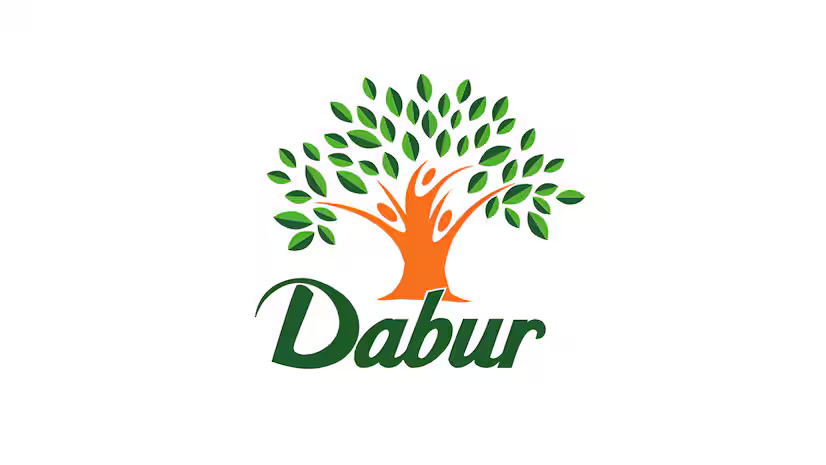
The Morning Dabur Woke Up to a Bitter Brew
Imagine waking up expecting a warm cup of tea and instead being served lukewarm water with a soggy biscuit. That’s probably how Dabur’s investors felt on the morning of May 8, 2025.
Dabur India — the household FMCG name we all grew up trusting for chyawanprash, hajmola, and real juice — opened nearly 4% lower after its Q4FY25 results hit the street. Not only did profits take a dip, but even the mood around the stock felt unusually somber.
But is it just a quarterly hiccup, or is the story deeper than the headlines?
What Happened in Q4: A Quick Glance
Let’s break it down — not just in numbers, but in what those numbers mean:
| Metric | Q4FY25 | Q4FY24 | % Change |
|---|---|---|---|
| Revenue | ₹2,830 Cr | ₹2,814.6 Cr | +0.5% |
| Net Profit | ₹320.13 Cr | ₹349.53 Cr | -8.4% |
| EBITDA | ₹426.8 Cr | ₹466.6 Cr | -8.5% |
| EBITDA Margin | 15.1% | 16.6% | Down |
| Domestic Volume Growth | -3% | — | Below estimates |
These aren’t just red flags — they’re more like flashing sirens. When domestic volume dips and margins compress, FMCG brands start sweating. Why? Because this sector thrives on consistency and scale.
A Tale of Three Portfolios: Food, Care & Health
Here’s where the plot thickens.
- Food Segment: Up by 14% YoY — the only bright spark.
- Home & Personal Care: Down 3.3% — people perhaps are holding off on premium shampoos and cosmetics.
- Healthcare: Dropped 5% — possibly due to a warmer, delayed winter.
- Beverages: Fell 9% — a soft season meant people sipped less juice.
In short: the ayurvedic giant is dealing with more than just seasonal sniffles.
What’s Fueling This Slowdown?
Let’s step away from spreadsheets for a second. Here’s what could be brewing behind the scenes:
1. Urban Consumer Fatigue
Inflation has been creeping up, and urban consumers are growing picky. Essentials win over nice-to-haves.
2. Weather Wars
A short and delayed winter directly impacted Dabur’s health segment — no one’s buying chyawanprash if winter barely shows up.
3. Changing Tastebuds
The Indian consumer is evolving. New-age D2C (direct-to-consumer) brands are flooding the market with flashy branding, bold claims, and influencer marketing. Dabur’s legacy may need a Gen-Z makeover.
Silver Lining? Think Global.
While India sales declined 3.7% YoY, Dabur’s international business grew by 19% in constant currency and 13% in INR terms — no small feat considering global uncertainties.
So while Indian homes may be closing their wallets, the world still seems curious about ayurveda.
Analyst Downgrades & Market Mood
Brokerage firms weren’t kind either. After the results:
- Ratings got slashed
- Price targets were trimmed
- FY26 and FY27 expectations were revised down
Even margin expectations hit decade lows. And when that happens in FMCG, it stings — because margins are the lifeline of volume-heavy businesses.
So, Should You Be Worried About Dabur?
That depends.
Dabur isn’t going bankrupt — far from it. It’s a cash-rich, dividend-paying stalwart. But if you were expecting it to be a compounder stock in 2025, the dream might need a pause.
But here’s what’s brewing in the background:
🧭 McKinsey is now helping Dabur redefine its growth playbook, focusing on 7 strategic pillars. Their internal goal? Achieve double-digit CAGR in revenue through FY28.
The question is: Will this be another corporate vision board exercise or a real turnaround tale?
Stock Performance Snapshot
| Timeframe | Share Price Move |
|---|---|
| 1 Month | +3% |
| 3 Months | -10% |
| YTD 2025 | -7% |
| 1 Year | -15% |
Valuation-wise, the stock is still trading at 37x FY27 estimated earnings, which may seem expensive given current growth metrics.
Frequently Asked Questions (FAQ)
1. Why did Dabur India shares fall after Q4 results?
Because of weak earnings growth, margin compression, and domestic volume decline, especially in key segments like healthcare and HPC.
2. Is Dabur still a good long-term investment?
It depends on your horizon. While the fundamentals remain solid, near-term growth challenges and valuation concerns may warrant caution.
3. What are Dabur’s plans for future growth?
Dabur is focusing on structural reforms with McKinsey’s help, aiming for double-digit revenue growth from FY25 to FY28.
4. Which segment performed best for Dabur in Q4?
The food segment grew by 14% YoY, showing strong demand despite broader headwinds.
5. How did Dabur’s international business perform?
It grew 19% in constant currency and 13% in INR terms, showing strength despite domestic weaknesses.
